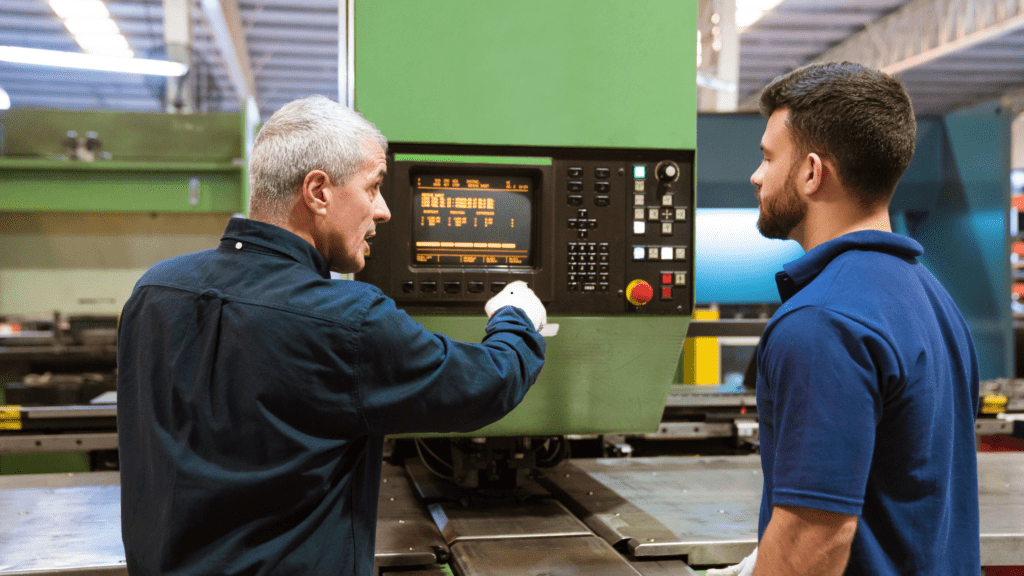Technical and Vocational Education and Training (TVET) equips individuals with the skills necessary to succeed. TVET encompasses a range of education and training activities designed to prepare people for employment in various trades and professions. Integral to the quality of TVET is the process of observation, teaching, learning, and assessment, which ensures that the education provided meets industry standards and addresses the needs of learners and employers.
The Importance of Observation in TVET
Observation is a fundamental component of the quality assurance process within TVET organisations. It is employed to monitor and enhance the effectiveness of teaching and assessment practices. Whether you are working towards a qualification or are already a qualified teacher, assessor, or quality assurer, observation plays an important role. It ensures that educational standards are upheld, teaching practices are effective, and learners are achieving the desired outcomes.
Why TVET Organisations Need to Conduct Observations
Observations are essential for several reasons:
- Quality Assurance: They help maintain high standards by identifying strengths and areas for improvement in teaching practices.
- Professional Development: Observations provide valuable feedback for educators, aiding their continuous professional development and ensuring they remain effective and up-to-date with teaching methodologies.
- Accountability: They ensure that teaching and assessment are carried out fairly, consistently, and transparently.
- Learner Success: By improving teaching practices, observations directly contribute to better student learning experiences and outcomes.
Mechanisms of Observation in TVET: A Step-by-Step Guide
Observations are essential in maintaining and improving the quality of education within TVET (Technical and Vocational Education and Training) organisations. They provide insights into teaching practices, classroom management, and the use of educational resources. Conducting observations effectively requires careful planning and execution. Below is a detailed step-by-step guide to the different mechanisms of observation:
1. Scheduled Observations
Scheduled observations are planned and are often part of a formal appraisal or review process. They are systematic and allow educators to prepare thoroughly.
Step-by-Step Plan:
- Notification and Preparation:
- Inform the educator of the observation date, time, and duration well.
- Provide details about the focus of the observation (e.g., teaching methods, learner engagement, use of resources).
- Pre-Observation Meeting:
- Arrange a meeting between the observer and the educator to discuss the upcoming observation.
- Clarify the objectives, criteria, and expectations of the observation.
- Review the educator’s session plan and any materials they intend to use.
- Observation Execution:
- The observer arrives on time, positions themselves unobtrusively, and takes notes based on the agreed criteria.
- Observe the educator’s teaching methods, classroom management, learner engagement, and the use of resources.
- Post-Observation Feedback:
- Conduct a feedback session immediately after the observation or at a scheduled time.
- Provide constructive feedback, highlighting strengths and areas for improvement.
- Discuss any further training or support needed.
- Documentation:
- Complete the observation report and share it with the educator.
- Ensure the report is stored securely for future reference and follow-up.
2. Unscheduled Observations
Unscheduled observations occur without prior notice, providing a genuine insight into everyday teaching practices.
Step-by-Step Plan:
- Planning for Unscheduled Observations:
- Decide on a timeframe during which unscheduled observations will occur.
- Ensure all educators know that observations can happen anytime within this period.
- Conducting the Observation:
- The observer visits the classroom without prior notice.
- Observe and take notes on the educator’s natural teaching style, classroom management, and learner engagement.
- Avoid disrupting the class and maintain a low profile to capture genuine teaching practices.
- Immediate Feedback:
- Provide brief verbal feedback at the end of the session if appropriate.
- Arrange a detailed feedback session soon after the observation.
- Follow-Up:
- Discuss the findings in detail, focusing on natural teaching behaviours and everyday practices.
- Offer recommendations and support based on the observation.
- Documentation:
- Complete the observation report and share it with the educator.
- Maintain a record of the observation for ongoing quality assurance.
3. Peer Observations
Peer observations involve colleagues observing each other’s teaching practices to share best practices and provide mutual support.
Step-by-Step Plan:
- Pairing Educators:
- Pair educators with peers who have complementary skills or areas of expertise.
- Ensure both parties understand the objectives of peer observation.
- Preparation:
- Arrange an initial meeting to discuss the focus of the observation.
- Review session plans and agree on observation criteria.
- Conducting the Observation:
- The observing peer attends the session and takes notes based on the agreed criteria.
- Observe the educator’s teaching methods, classroom interaction, and learner engagement.
- Feedback Session:
- Arrange a post-observation meeting to discuss findings.
- Provide constructive feedback, share best practices, and discuss possible improvements.
- Encourage open and honest dialogue.
- Reflective Practice:
- Both educators reflect on the observation process and feedback.
- Implement changes based on the feedback received.
- Documentation:
- Document the observation and feedback for personal development records.
- Use the insights gained to enhance teaching practices.
Supporting Staff in Observation and Teaching Practices
Support for staff undergoing observation is critical to the success of the process. TVET organisations should provide the following:
- Training and Resources: Access to teaching practice resources, observation templates, and checklists can help educators prepare effectively.
- Mentorship: Experienced mentors can offer guidance and support before, during, and after the observation.
- Feedback: Constructive feedback should be given in a supportive environment, allowing educators to reflect and improve.
- Professional Development Opportunities: Workshops, courses, and online modules can help educators enhance their skills and stay abreast of new teaching strategies and technologies.
Preparing for Observation
Effective preparation can alleviate anxiety and improve performance during an observation. Educators should:
- Develop a clear session plan with specific aims and objectives.
- Ensure all teaching materials are well-prepared, varied, and inclusive.
- Practice delivering the session, perhaps recording themselves to identify strengths and areas for improvement.
- Inform learners about the observation to set expectations and reduce any potential disruptions.
During the Observation
Educators should focus on delivering engaging, inclusive, and varied teaching methods during the session. They should remain calm and adapt flexibly to learners’ needs. Observers will look for evidence of effective teaching practices, learner engagement, and progress.
Post-Observation Reflection and Feedback
Receiving feedback after the session is a required part of the learning process. Educators should use this feedback to reflect on their practice, considering what went well and what could be improved. Keeping a reflective journal or learning diary can help in this process.
Evidencing Teaching Practice
Documenting teaching practice is essential for both personal development and formal assessment purposes. Evidence can include session plans, feedback forms, self-evaluations, and records of learner progress. This documentation provides a comprehensive overview of an educator’s capabilities and achievements.

Implementing Observation of Teaching, Learning, and Assessment Policies and Procedures in TVET Organisations
Implementing a structured and effective framework is paramount for TVET organisations without established policies and procedures for observing teaching, learning, and assessment. This section outlines a step-by-step guide to help organisations develop and implement these policies and procedures.
1. Initial Assessment and Planning
Step-by-Step Plan:
- Needs Assessment:
- Conduct a thorough assessment to understand the current teaching, learning, and assessment practices.
- Identify gaps and areas that require improvement through surveys, interviews, and feedback from staff and learners.
- Stakeholder Involvement:
- Involve key stakeholders in the planning process, including educators, administrators, and learners.
- Form a working group or committee to oversee the development and implementation of observation policies.
- Benchmarking:
- Research best practices from other TVET organisations and educational institutions.
- Benchmark against national and international standards to ensure the policies align with industry requirements.
2. Developing Policies and Procedures
Step-by-Step Plan:
- Policy Drafting:
- Draft a comprehensive policy document that outlines the purpose, scope, and objectives of observation.
- Define the types of observations (scheduled, unscheduled, peer) and their respective processes.
- Procedure Development:
- Develop detailed observation procedures, including preparation, execution, feedback, and documentation.
- Ensure procedures are clear, practical, and accessible to all staff members.
- Criteria and Standards:
- Establish clear criteria and standards for evaluating teaching, learning, and assessment practices.
- Create observation checklists and templates to standardise the process.
- Approval and Validation:
- Present the draft policies and procedures to the working group or committee for review.
- Seek feedback and make necessary revisions before final approval from the organisation’s leadership.
3. Implementation and Training
Step-by-Step Plan:
- Communication:
- Communicate the new policies and procedures to all staff members through meetings, emails, and intranet announcements.
- Ensure everyone understands the importance and benefits of the observation process.
- Training Programmes:
- Develop and deliver training programmes for staff to familiarise them with the new policies and procedures.
- Include workshops, seminars, and online modules to cater to different learning preferences.
- Resource Allocation:
- Provide the necessary resources, such as observation checklists, feedback forms, and recording equipment.
- Ensure all staff can access these resources and understand how to use them effectively.
4. Pilot Testing and Evaluation
Step-by-Step Plan:
- Pilot Programme:
- Implement a pilot observation programme to test the new policies and procedures.
- Select a small group of educators to participate in the pilot.
- Monitoring and Feedback:
- Monitor the pilot programme closely and gather feedback from participants.
- Identify any issues or challenges and make necessary policy and procedure adjustments.
- Evaluation:
- Evaluate the effectiveness of the pilot programme by analysing feedback and observation outcomes.
- Use this evaluation to refine and finalise the policies and procedures.
5. Full Implementation and Continuous Improvement
Step-by-Step Plan:
- Full Rollout:
- Roll out the finalised observation policies and procedures across the entire organisation.
- Ensure ongoing support and communication to maintain momentum and engagement.
- Continuous Improvement:
- Establish a system for regular review and updates of the policies and procedures.
- Encourage ongoing feedback from staff and stakeholders to identify areas for improvement.
- Use data and insights from observations to inform professional development and strategic planning.
- Recognition and Incentives:
- Recognise and reward educators who demonstrate teaching, learning, and assessment excellence.
- Create incentives for continuous improvement and innovation in teaching practices.
Conclusion
Observation, teaching, learning, and assessment are interconnected processes that are key to TVET’s effectiveness. By ensuring these processes are robust, TVET organisations can guarantee high-quality education that meets the needs of both learners and employers. Continuous support and development for educators are key to maintaining these standards and promoting an environment of ongoing improvement and excellence.



